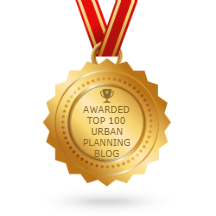Building housing ahead of the market in "transitioning" markets
At a real estate conference I was at many years ago, a developer made the point that building affordable housing was unprofitable in Prince George's County, Maryland (the area's least economically vibrant community but comparatively still quite successful) because it was underpriced by existing Class B, C, and D housing.
I've mentioned the HUD typology of neighborhood type, ranging from distressed to healthy, with various types of emerging and transforming points in between.
Photo: Justin Guido, PPG.An example in Pittsburgh about new construction in urban neighborhoods with relatively weak microeconomies, illustrates both points.
A developer built some new (ugly to me) rowhouses in Pittsburgh's Hill District, believing that the "neighborhood deserves" new construction housing and greater choice, just like more thriving parts of the city ("Six new townhomes. Zero buyers. And one developer on the brink," Pittsburgh Post-Gazette.
The houses were priced at about double the area's mean housing price of $227,000. None have sold even after price reductions. From the article:
The six modern townhomes on a quiet stretch of Rose Street were built by developer Steffan Johnson — who saw them as a personal response to the difficulty he experienced while shopping for urban housing desirable to upwardly mobile Black professionals when he and his family moved here in 2009 from Minneapolis.
“I wanted to show what’s possible for this side of the city by bringing modern architecture and high-end finishes — almost custom homes — to a part of the Hill that is long overdue,” he said. But five months after listing the homes — for $480,000 — Mr. Johnson has yet to find a single buyer.
This is a lesson for revitalizing cities and neighborhoods that you can't be too far ahead of the market. Especially when it is still emerging.
East of the River neighborhoods in DC have a similar problem with new construction not always being able to appraise at the right price to support a mortgage, because existing housing costs less, and it's hard to find higher price comp(arison)s.
It's interesting to think about this in terms of his target market. Does it exist in Pittsburgh, or are people content to live in non-Black majority neighborhoods.
Another is the idea of the "one over neighborhood" ("When the one over neighborhood is in the county next door, and housing prices have been in the tank: Mount Rainer, Maryland," blog entry 2016) by Live Baltimore. The Hill District hasn't developed positive dynamics at the scale of the metropolitan residential housing landscape the same way that South Pittsburgh or Lawrenceville have.
Labels: demographics, housing choice, housing market, neighborhood revitalization, real estate development, real estate market




3 Comments:
Location. Location. Location.
As apt a summarization as any!
https://fortune.com/2025/07/23/baby-boomers-dominate-housing-market-millennials-gen-z/
Post a Comment
<< Home